Humming Blog |
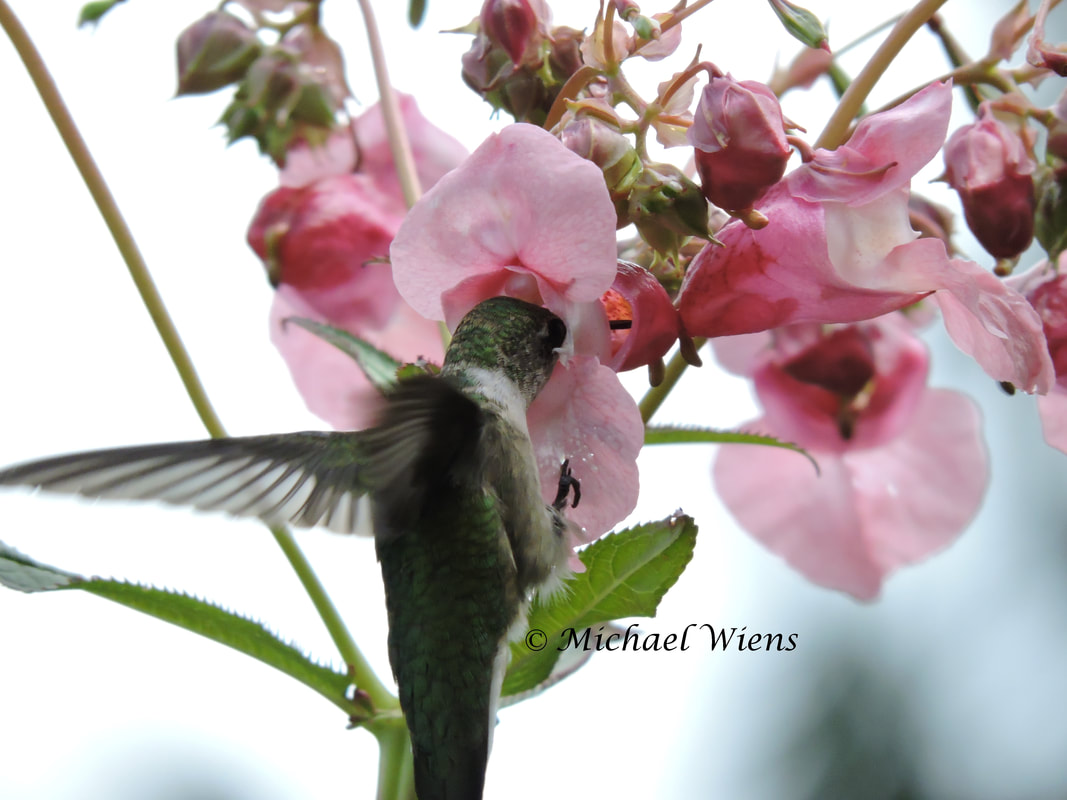 It can be very difficult to know which flowers are favorites to hummingbirds. You can have a yard full of Geraniums and frequently see hummingbirds show up to them, but it doesn't mean they top their list. If the Geranium is the best of what you've got in your garden then it will appear like the best flower for them to feed from, but not even close to the best in food value. Over the last few years people have listed their favorite hummingbird flowers on my website. I'm very surprised at times at which flowers are mentioned, and at other times it's confirmation of just how good certain flowers are. I suppose a lot has to do with the amount of time someone has been attracting hummingbirds. If you are new to attracting them, then there are a number of flowers that you should just not do without. That list of flowers can vary greatly depending on the region or climate you live in. In a recent post I gave some ideas of perennials and annuals that are really effective. Today I wanted to mention that it's a good plan to always add a few new varieties each year. Change it up a bit and try half a dozen new flowers each year. See how effective they are and decide whether to continue them in future years. Test them for hardiness, how much attention they deserve or need, how well they flower and ultimately how much hummingbirds like them. Like I've mentioned in a past post, plant heavily on the effective one's. Over the years you will develop a garden that requires the least amount of effort with the greatest rewards and the most hummingbirds. Some people may question why I would suggest flowers that require the least amount of effort, but it starts to make sense as you expand your garden and repeatedly have to give attention to certain flowers that just don't produce well. There's enough work to be done without having to give special care and attention to that one ornery flower that won't produce as you wish. I only wish Foxgloves would do well in my garden but every year I lose 75% of them and the other 25% do very poorly. They are a hummingbird magnet but have been scratched off my good list for a few reasons, mostly because they don't survive in my climate or soil. This is one reason I love to start plants indoors from seed. It's extremely cost effective to plant some new perennial varieties from seed each year. If you lose them over the first winter it's no great loss. Again, here is a page on my website that will give you an idea of flower choices for hummingbirds. http://www.therubythroat.com/flowers.html Here is an image of a young Ruby-throat that found great value in a Himalayan Balsam (It's considered an invasive species in some regions). Hummingbirds like them even though it takes a bit of monkey work to get to the nectar. If you look carefully, you can see the little razor talent pierced through the petal. After a while the bottom petal of each flower became shredded from the intense feeding. N.E. of Edmonton, Alberta, Canada. August 2017. Juvenile Male Ruby-throat hummingbird.
0 Comments
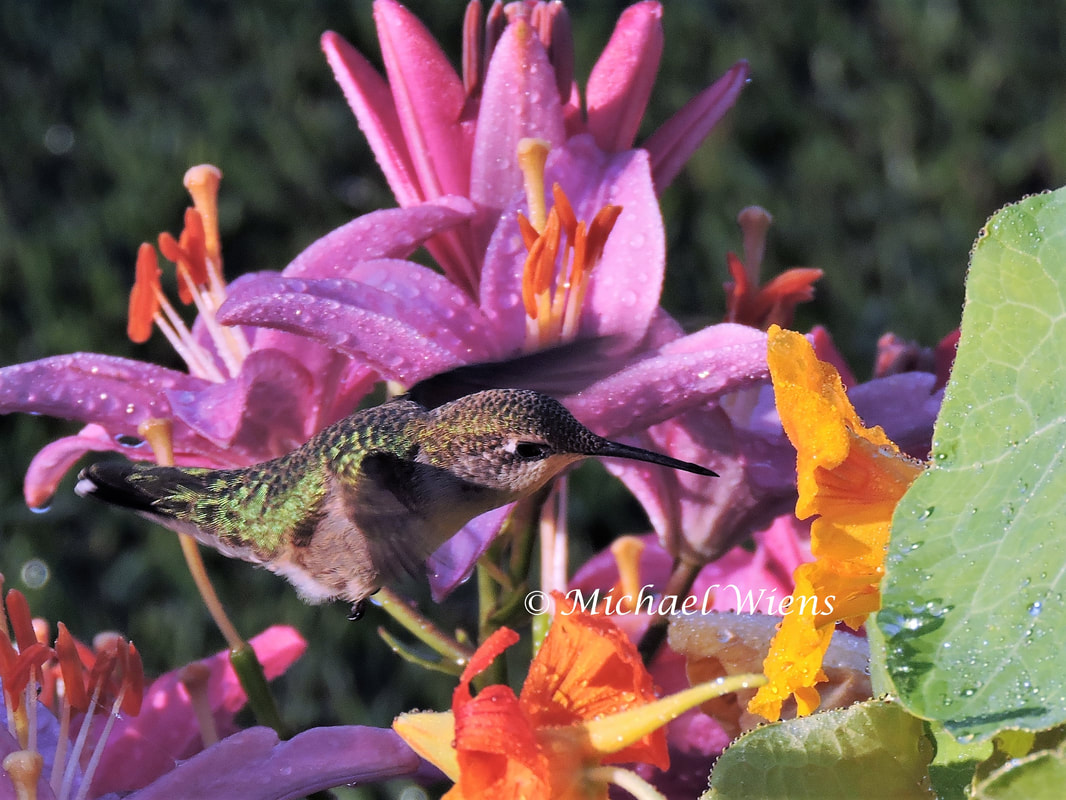 I've posted several times about the significance of of feeders in attracting adult hummingbirds and eventually the juvenile hummingbirds, but the value of flowers cannot be denied. They serve multiple purposes. Clusters of flowers are viewed by hummingbirds as restaurants are viewed by us. Large masses of flowers can be far more visible than a hummingbird feeder and can draw hummingbirds in from great distances, so it's important to not only plant flowers, but to plant them in large clusters. Although colors make a big difference in attracting hummingbirds, there aren't a lot of red perennials in my region that survive the winters, so I make it up in annuals. In addition to the flowers, I like to use brighter colored pots to plant them. A 3 foot red pot can be visible from a very long distance and prove to be a better attraction than a small hummingbird feeder. Color means everything! Young hummingbirds from the nest are naturally drawn to flowers. It's not quite as easy to get them to feeders because they don't look quite as natural. They will oftentimes fly up to it to admire the colors, but they have little understanding of them. Trust me, once they learn their value they'll return. But until they learn the importance of feeders, it is extremely important to have large amounts of flowers to provide enough food up until the time they solve the feeder. Even more importantly than having flowers, are having the right ones. Although my planting zone proves to be a challenge with my bitterly cold winters, I've still managed to figure out a good selection of perennials that repeatedly do well in my climate. Then I provide a good selection of annuals to fill in the gaps. The difficulty in listing good annuals and perennials is that many of these same flowers would not do well in every climate. Many of you in the far south grow flowers that I only wish would survive in my region. I will list some flowers as a suggestion, but it'll take a bit of work on your part to figure out which flowers successfully attract hummingbirds in your own climate. Although colors closest to red in the spectrum are extremely popular, it doesn't mean they will provide a lot of nectar. When it comes right down to it, it's the food within the flower that matters the most. I also have a page on this website listing annuals and perennials and how they rate for hummingbirds. If you would like to suggest a flower of importance, then please do. If you would like it included on my website, please attach a clear picture of the flower, its name, and how good you would rate it for hummingbirds out of 5(5 being best). I would post it on the website, available for everyone to view. Here is my short list of flowers that I find invaluable: Annuals Fuchsia(mild perennial in the south), Nasturtium, Zinnia, Million Bells(Calibrachoa) and Scarlet Runner Perennials Honeysuckle, Delphinium, Salvias, Maltese Cross, Columbine, Hostas, and Ligularia Flowers matter! I can't tell you how many times I've had young hummingbirds around my yard for several days until they finally figured out a feeder. If I didn't have a significant amount of alternative food sources in flowers, many of those young birds would have moved on. When you figure out a flower that tops your list on the hummerscale, go heavy on them. It's better to have half a dozen great clusters of flowers around your yard than to have hundreds with little value. When it comes right down to it, we plant primarily for the hummingbirds. Give them enough choices to stick around, and I promise you they will. 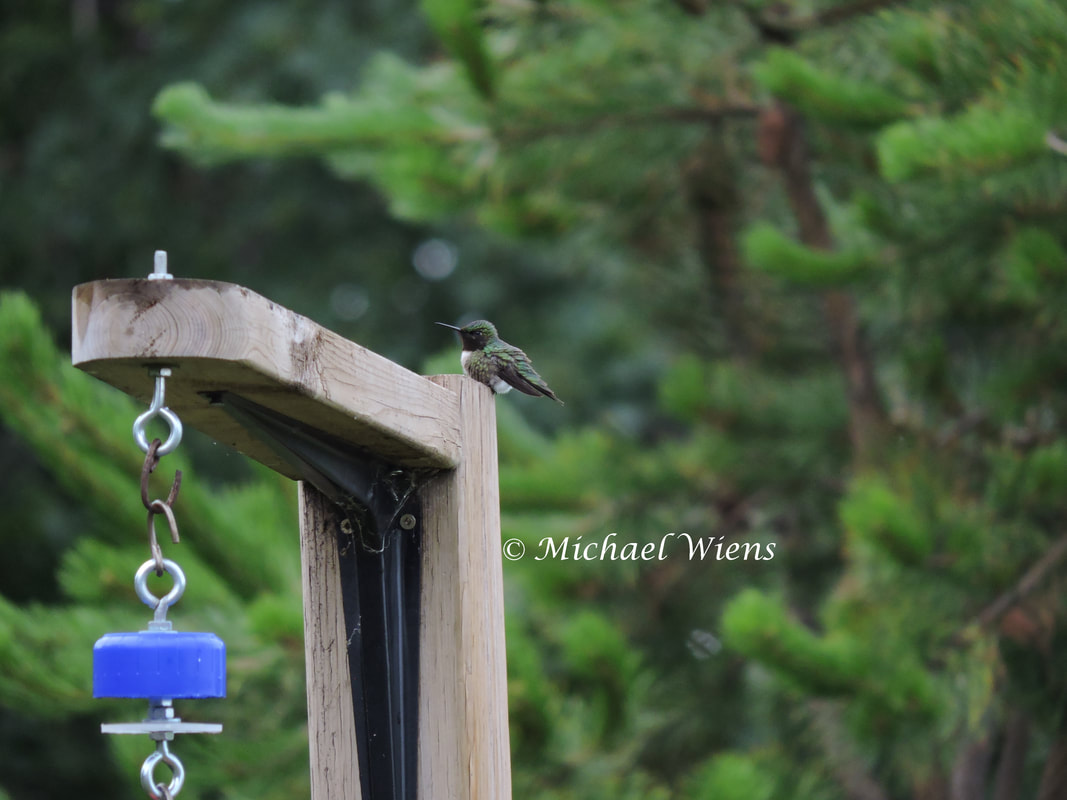 Just like our hummingbirds have a trigger to when they migrate south, the same thing happens during their summer stay in Central and South America. One moment they're protecting a feeder, the next their focus is strictly on moving to their summer location of the North. Those triggers will be going off like crazy over the next week, as it's time for many to start their Northern migration. I know that I'm not alone in the excitement for Spring. The fire gets lit under many gardeners and birders this time of year, and although Winter still provides me with 20 inches of snow on the ground, Spring will arrive quickly. That first "Honk" of a Canada Goose is my Spring harbinger, but the smell of melting snow, freshly dug soil or the most beautiful song of the Robin or its other songbird cousins, just ignites a fire in me like nothing else. Although many people would consider me a little over the top with my fascination for hummingbirds, there are others just as nuts as I am. It's not strange to plan your summer around hummingbirds, or to dream of multiple species of them showing up in your garden. It's normal, perfectly normal. Over the next week we will see the first arrivals of the Ruby-throats appearing on the Southern Shores of the U.S. Every one of us will start to plan and prepare for our own "Ziggy" to return. The first to show up will usually be the males. Many of the previous year's males will follow a dedicated route back to their summer home, while many of last year's juvenile males will be searching for new territories to call their own. These hard journeys will include escaping predators, flying thousands of miles, at times with little food, and battling fiercely with others. So for those who want to participate in their success, be sure to have your feeders out 7-10 days before their normal arrival date to your region. This photo is of my "Ziggy". After showing up last Spring, he arranged all his priority perches to keep an eye out for the soon to arrive females. N.E. of Edmonton, Alberta, Canada. May 2017 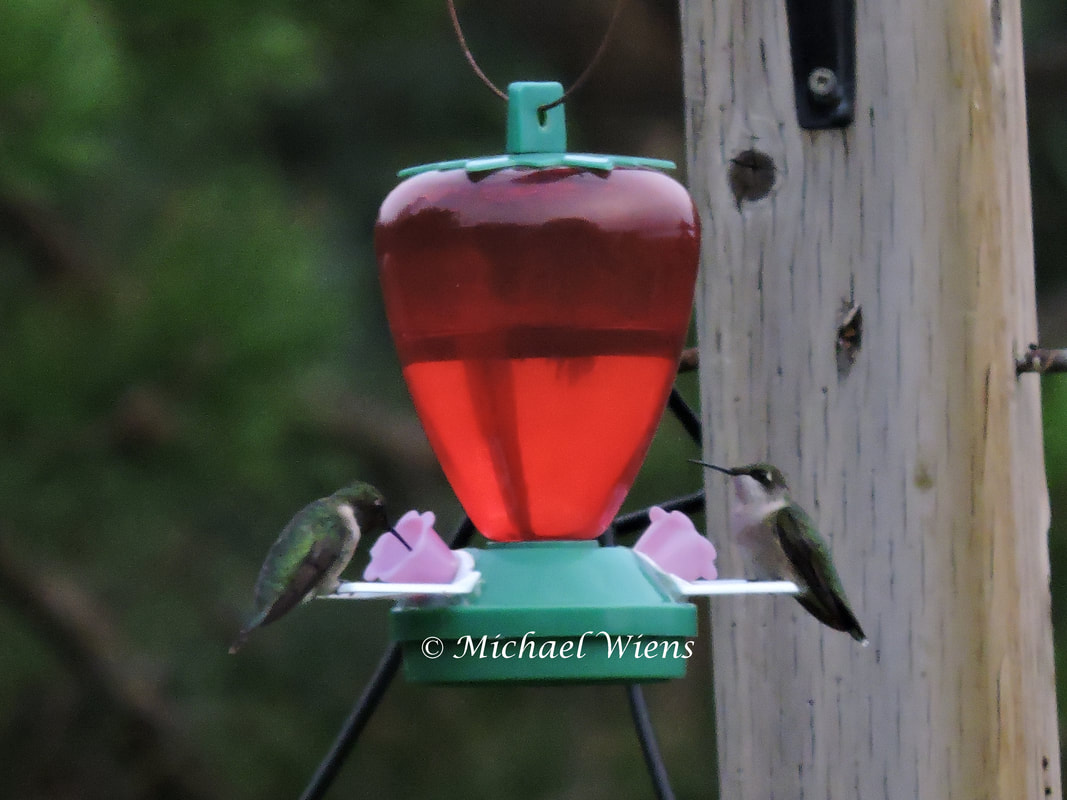 Many people wonder why so many hummingbirds can gather in certain regions and feed together on the same feeder when in other regions two birds can't get along on the same feeder. This is really dependent on the population. The less birds you have, the more one will try to dominate. When the numbers start to increase dramatically they soon realize it'll be difficult to chase away one hundred hummingbirds. They do less chasing but continue with the squeaking in squabbling. They are still angry but soon realize it's more productive to feed together than constantly chasing others. When you first look at this image, you would think the young male on the right is overstepping his boundary with the adult male on the left. In reality the juvenile male on the right had already fought and won territory over that feeder. As the numbers started to increase in the yard with new migrant birds, the adult male on the left took it upon himself to feed from the first feeder he spotted. He arrived while the young male was feeding. The young male then pulled its bill from the feeder and was a little shocked the adult male would even dare. Needless to say, it started another battle as it typically would. This is one reason I like to place multiple feeders around the yard. Early in the season the dominant male will try to control all feeders. It makes it more difficult if you spread the feeders apart. Later in the season it's not about breeding, but just stocking up on food for the southern journey. Early in the season one dominant male will win the rights and access to everything in the yard. You may still have other males sneak into the yard for a drink, but for the most part the dominant male will take over. When the southern migration starts, that territory shrinks dramatically. You can get countless males that share the yard, but each one will try to control its favorite feeder until they all get it sorted among themselves. Both hummingbirds are Ruby throated, but the one on the left is an adult male, and the one on the right is a maturing juvenile male. Northeast of Edmonton, Alberta, Canada, August 2017. 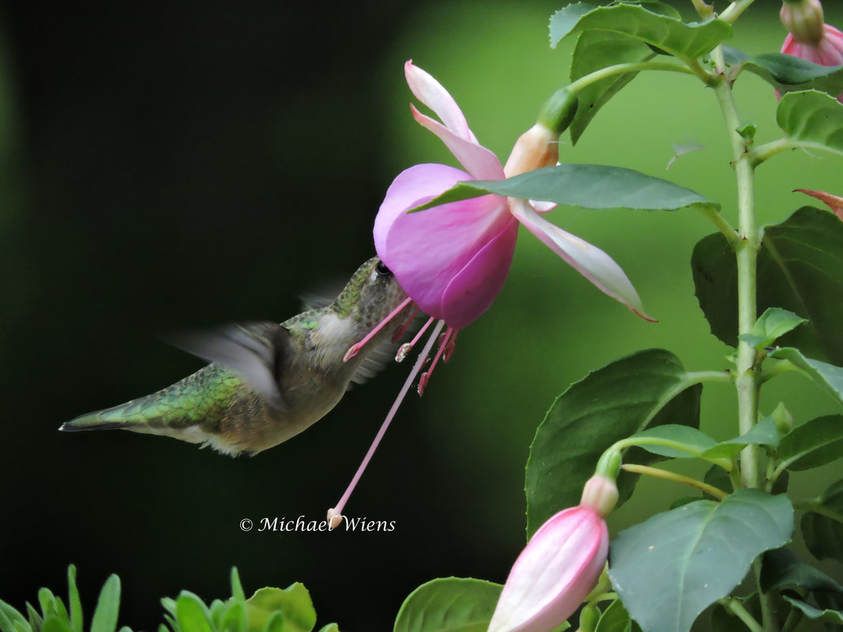 Capturing hummingbirds in natural surroundings can be extremely difficult until you understand these birds a little better. They make quick bursts from one flower to the next and can give you less than 2 seconds to spot, focus and shoot. 2 seconds is not a lot of time to capture that moment of a lifetime, but I'd like to give a few tips on how to increase your capture percentage. I won't give camera advice because that's really not my strength. One thing that's crucial is understanding your camera very well before you put yourself in a position to use it. There are so many times that I've taken bad pictures, only to realize later that the settings could've been much better in that particular situation. Practice with your camera in all light conditions and learn the features available to you. I am not by any means a professional photographer, but what I do specialize in his understanding the behavior of hummingbirds, and once you understand certain things about them, you're half way there. 1. The first thing you should know is that hummingbirds are very similar to all living things in the way that they are creatures of habit. They use all their senses to establish patterns that they habitually follow until something disrupts that pattern. Loss of food, predators, or simple noises and distractions can change the pattern of a hummingbird. If none of these things are in effect, then a hummingbird will repeatedly follow the same path and pattern to complete its purpose. When adult females are nesting, they'll feed very little early on, and as the young get older the feeding dramatically increases according to need. When young birds leave the nest they will typically feed every 10 to 20 minutes. Remember this when you have a sighting. If it's a quality flower that produces good nectar, that bird will repeatedly visit that flower, and you will be prepared for when it arrives. 2. The second thing to learn is anticipating the hummingbird's next move. If you try and focus on its current location you may get a shot, but it's more likely that you'll focus just when the bird is moving onto the next flower, and you'll be repeatedly following the bird, and continuously missing the shot. So anticipate its move. Clusters of flowers can keep their attention for a lengthy time, so when you're watching it bounce from one flower to the next, point and focus on the obvious, most exposed flower in the direction it's heading. They usually go to the open flowers, where they don't have to do digging to get the nectar, with the exception of very young birds. At the second they arrive, you will be focused and prepared to burst out a series of great captures. 3. The third thing to remember is that adult birds have a far better memory than young birds. Move to the location where you want to take your photos only when the adult birds aren't watching. If they watch you move to a particular spot, it will be a long time before they give you a good opportunity. Young birds can be spooked, but be back within 15 minutes without a care of your existence. One common mistake I see with photographers shooting hummingbirds is holding the camera down on their lap unprepared. When the camera gets raised the hummingbird is spooked. They have far better vision than you can possibly imagine. The wiggle of a toe or the relocation of a finger on your camera is not missed. Everything they do is at high speed. The fast twitching of their head and the quick processing of their eye is quickly translated to their brain that there's danger. Within a fraction of a second, that photo op is gone. The camera should remain up and ready, and if you have to move, slow and steady movements are crucial. These are 3 important things that I find necessary to photographing hummingbirds. I believe that everyone who follows these important rules will increase their capture rate. This young Ruby appeared roughly every 20 minutes to one of its favorite flowers, the fuchsia. N.E. of Edmonton, Alberta, Canada. Early August 2017 It was late July, 2017. The Delphinium flowers were in full bloom and standing tall. Looking into the garden from a distance, all you could see were tall spikes of blue and purple everywhere. For a hummingbird, the garden would look like a Candy Land. Every flower was full and showing its brilliance, and then the rain came. A full day of rain and gusty winds shook and snapped many stalks. All I could do from indoors was wait until it finished. The next morning fresh fragrant air consumed the garden, and the smells, sights and sounds made it good to be alive. The strong winds had formed some character into the tall Delphiniums and made them arch over creating a tired looking garden. Countless raindrops filled each flower until they were saturated and slumping. Every open flower caught the drops of rain and mixed with the nectar, making them less desirable for hummingbirds, but in the case of this young Ruby-throat, it soon figured out that the flowers under the arches still held undiluted sweet nectar. It made the best of a soggy situation. I spent the remainder of the cloudy morning capturing the young birds searching out worthy blooms.
From one package of seeds about 12 years ago, I've created about 20 or more islands of Delphiniums spread over 1/2 and acre. This is just one small area of the garden that's usually a preferred location for the young hummingbirds, until they figure out the feeders. Even then they find it hard to resist. N.E. of Edmonton, AB., Canada. Late July 2017 |
Archives
June 2024
Categories
All
|
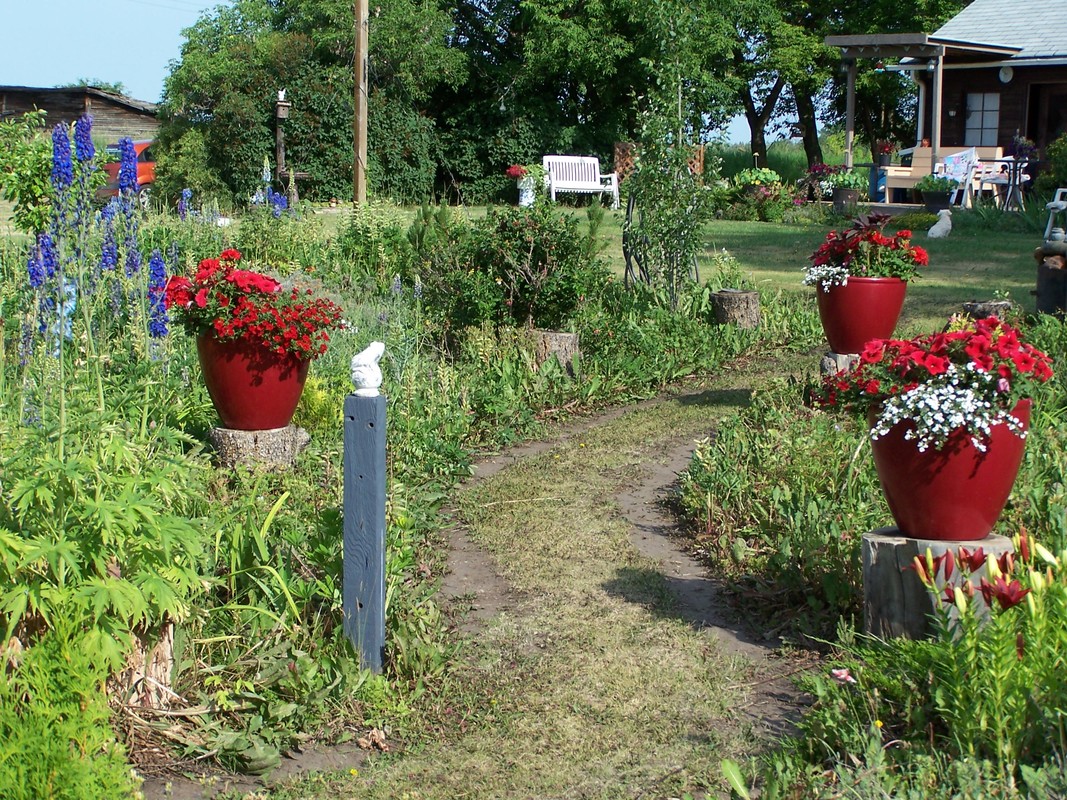
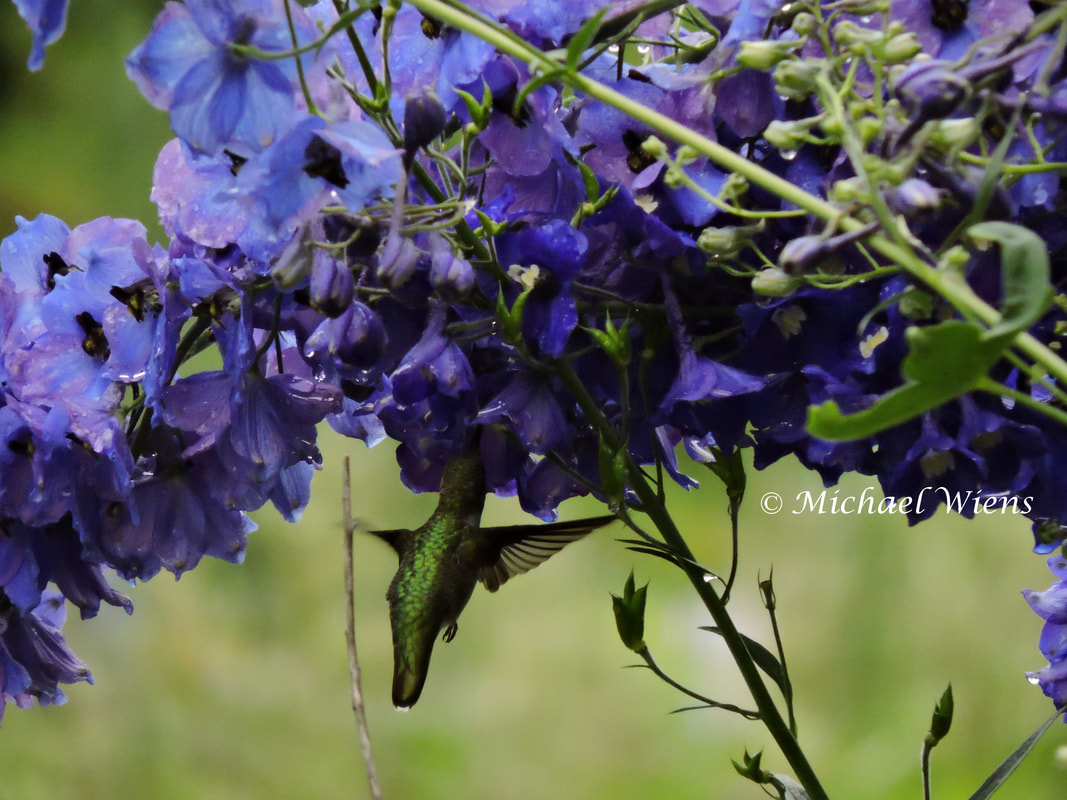
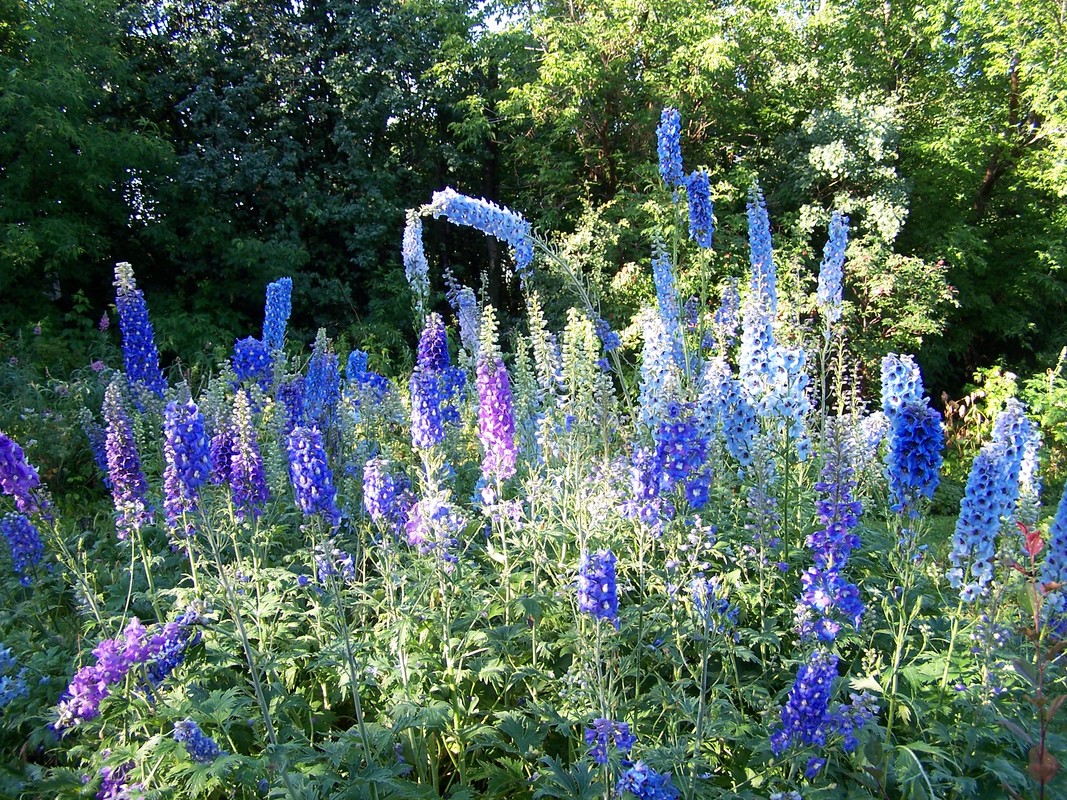
 RSS Feed
RSS Feed
